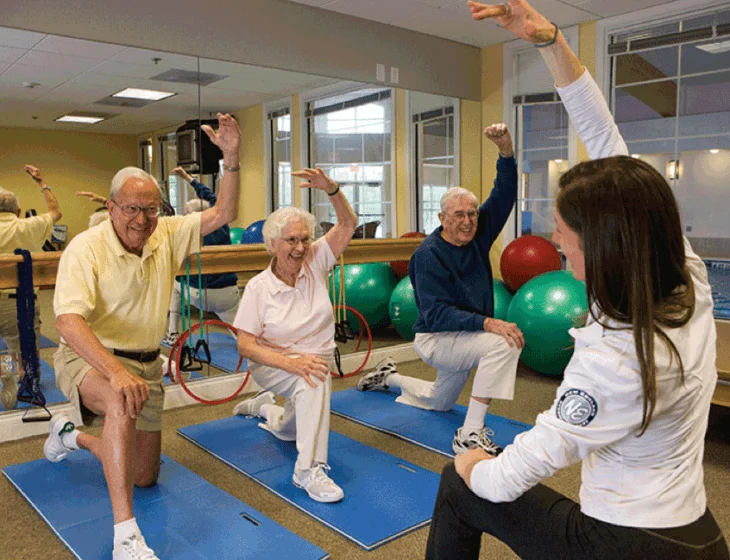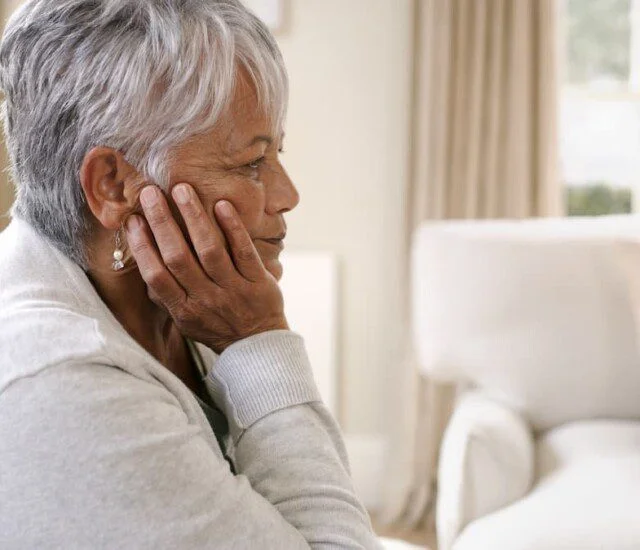You don’t have to be young and flexible to do yoga. In fact, the ancient practice is perfect for seniors who want to keep their mind sharp, muscles strong and stress at bay. Recent studies have found that yoga is a great addition to other forms of physical exercise for older adults thanks to its focus on calming the mind while moving the body.
Yoga can be practiced almost anywhere and most poses can be modified to accommodate your body’s special needs with props including yoga blocks, straps, or while sitting in a chair. Gentle twists on a chair can help alleviate back pain, and simple leg lifts while sitting can help stretch your hamstrings and strengthen your quadriceps. Deep and slow inhales and exhales with the eyes closed can help calm the mind.
- Improves Balance. When you practice yoga poses, you help your proprioception, or your sense of position in space. This awareness can help you become better balanced. Additionally, postures like tree pose can help older adults practice shifting weight from one side to another to better balance and to strengthen both sides of the body equally.
- Keeps the Mind Sharp. In some styles of yoga, a “dristi,” or gazing point is emphasized and in all styles, slow, deep and even breathing is encouraged. Both the dristi and deep breathing can help calm the mind and improve concentration and focus. In fact, according to a study published in the Journal of Physical Activity and Health, older adults who practice yoga have increased memory and processing power.
- Lowers Blood Pressure. Several studies suggest that yoga can help lower blood pressure and ease hypertension by lowering our diastolic blood pressure levels. The physical practice of yoga – called hatha yoga – is gentle on the cardiovascular system, while meditation and pranayama, or yogic breathing exercises helps lower the heart rate.
- Helps Bone Density. Older adults with weakened bone density can benefit from a regular yoga practice. In fact, recent studies have shown that yoga can reduce or even prevent osteoporosis. A two-year study of adults with an average age of 68 showed that those who practiced yoga had higher bone density than those who did not do yoga poses regularly.
- Alleviates Arthritis. If you’re a senior with arthritis, you know how challenging and painful exercise can be. Gentle yoga can be a great solution for those with all forms arthritis. Not only is it low-impact so it doesn’t tax the joints, but yoga poses work to strengthen the muscles around joints to keep them safe. Additionally, yoga poses add suppleness to the connective tissue to keep joints mobile.
Ready to try yoga? Get started with these easy poses that you can do on your own.
- Tree Pose. This simple pose helps build strength in your ankles and hips, as well as in your abdominal muscles, where we find balance. Start by standing with your back on a wall. Take one foot and walk it slowly up the other leg, stopping when it begins to get harder to balance.
- When you feel stable, try bringing your palms together by your heart. Fixating your gaze at the floor or wall in front of you can help you stay balanced. If it is too difficult to bring your foot off the floor, simply lift your heel to the opposite ankle, so you keep both feet on the floor.
- Seated Twist. Yoga postures work the front and back of our bodies as well as our side bodies, where muscles tend to be tight. A seated chair twist can help stretch these muscles and reduce shoulder and lower back pain and stiffness.
- Start by sitting up close to the edge of an armless chair. Turn to one side and hold the back of both sides of the back of the chair. To stretch your neck, turn your head gently to look over your shoulder.
- Savasana, or Corpse Pose. To help reduce anxiety and stress, consider spending a few minutes in corpse pose. Chose a quiet place and lie down on your back. If you have knee or lower back pain when lying flat place a rolled up blanket or pillow under the area so that you can relax in comfort.
Let your muscles relax and observe your thoughts, but let them float by you as if you’re watching the clouds. The goal is to ease your mind and body. Note: Savasana is considered one of the hardest poses in the yoga practice. If you can’t relax completely in the posture, don’t worry. Keep trying. Eventually, you’ll experience the benefits of this wonderful pose.


